Olens - Hankuk Univ. of Foreign Studies Branch [Tax Refund Shop] (오렌즈 외대)
8.9Km 2024-04-22
1F, 16, Hwigyeong-ro, Dongdaemun-gu, Seoul
-
Aritaum - Hankuk Univ. of Foreign Studies Station Branch [Tax Refund Shop] (아리따움 외대역)
8.9Km 2024-04-18
25, Hwigyeong-ro, Dongdaemun-gu, Seoul
-
Hangang Night Walk 42K (한강나이트워크42K With 허벌라이프)
8.9Km 2024-07-25
68 Yeouigongwon-ro, Yeongdeungpo-gu, Seoul
+82-10-2100-3855
The Hangang Night Walk 42K is a nighttime walking marathon, starting and ending at Nogeum Fountain at Yeouido Hangang Park in Seoul. The marathon features three courses: 15K, 22K, and 42K to enjoy the hot summer night. The courses all feature beautiful views, such as the Banpodaegyo Bridge Rainbow Fountain. Because the marathon is a walking one and not running, people of all ages can participate, talking the night away as they walk.
CU - Hankuk University of Foreign Studies Branch [Tax Refund Shop] (cu한국외국어대학교점)
8.9Km 2024-06-27
107, Imun-ro, Dongdaemun-gu, Seoul
-
Ran (란)
8.9Km 2021-04-12
12, Yeouidaebang-ro, 53ga-gil, Yeongdeungpo-gu, Seoul
+82-2-848-1884
It is a soup that has been boiled for a long time and is good for the body. This Korean dishes restaurant is located in Yeongdeungpo-gu, Seoul. The most famous menu is oxtail soup.
Sanullim 1992 (산울림1992)
8.9Km 2024-03-15
60 Seogang-ro 9-gil, Mapo-gu, Seoul
This Korean bar and restaurant serves Korean dishes with nearly 200 types of traditional Korean liquor on offer, including makgeolli (unrefined rice wine), refined rice wine, and distilled liquor. Its food menu includes bean curd with stir-fried kimchi, ox knee soup (soup made by boiling down calcium-rich ox knee), and cabbage wraps with soy sauce braised pork. The signature menu here, however, is “Bansang,” set menus of the customer's choice ranging from No. 1 to No. 5 served on a round dining table. Each number has a different pricing and composition, but all offer new and unique flavors. The savory and crispy cheese and potato pancake goes perfectly with tangy omija makgeolli.
Olympic Park (올림픽공원)
8.9Km 2023-10-19
424 Olympic-ro, Songpa-gu, Seoul
+82-2-410-1114
Olympic Park is an impressive leisure facility in which historic remains from the Baekje era share space with modern, state-of-the-art sports stadiums, an eco-friendly forest, and spacious grass fields. The legacy of the 1988 Seoul Olympics, the park not only houses the country’s largest sports arena, but has also become a place where Seoul residents come to relax and unwind.
Spread across approximately 1.45 million square meters, Olympic Park encompasses the land that was once Mongchontoseong Fortress and Mongchonhaeja (manmade lake) from the early Baekje period. The park is divided into several zones, including a leisure sports park, a cultural art park, an eco-park, and the History Experience Park dedicated to the area’s rich historic heritage.
Because Olympic Park is so large and takes over three hours to explore, visitors are advised to familiarize themselves with entrances and exits and travel routes before they start. To further save time, visitors can ride the Road Train (“Hodori Train”) located next to Peace Square.
Seoul Jazz Festival (SJF) (서울재즈페스티벌)
8.9Km 2021-07-21
424, Olympic-ro, Songpa-gu, Seoul
• 1330 Travel Hotline: +82-2-1330 (Korean, English, Japanese, Chinese) • For more info: +82-2-563-0595
In the wide grass field of Olympic Park in Jamsil, Songpa-gu, Seoul, Asia's top jazz festival, the Seoul Jazz Festival is held. Every May, world-famous artists come to entertain visitors during the festival.
I am A burger (Hongdae Branch) (아이엠어버거 (홍대점))
8.9Km 2017-02-21
13, Wausan-ro 30-gil, Mapo-gu, Seoul
I am A burger serves handmade style hamburgers where customers can choose buns and patty options of their preference.
Pungnap-dong Toseong Fortress (서울 풍납동 토성)
8.9Km 2025-01-10
Pungnap-dong, Songpa-gu, Seoul
+82-2-2147-2800
Onjo, the progenitor of Kingdom Baekje, first settled in Wiryeseong Hanam. But exact location is still unknown. One thing for sure, however, is that Pungnaptoseong Fortress, Mongchontoseong Fortress, Bangidong Ancient Tombs of Baekje, Seokchondong Stone Mound Tomb of Early Baekje are the remains of Baekje. Pungnaptoseong Fortress faces Hangang River to its west and connects to Mongchontoseong Fortress to the south. To the northwest faces Achasanseong Fortress over Hangang River and far to the southeast is Namhansanseong Fortress.
Pungnaptoseong Fortress, located at the south end of Cheonhodaegyo Bridge over Hangang River, is one of the remains of Early Baekje. Originally, the fortress was 4km in circumference, but due to massive overflowing of Hangang River during flood season in 1925, most of the fortress was lost and only 2.7km of it remains. To the east of the fortress are 4 vestiges of the fortress gates. The remains from the prehistoric era through the Samguk (Three States) era have been unearthed, indicating that this place was a residential area well before the Baekje Era. Through vigorous excavation, some people suggest that there used to be a palace located here during the Baekje Era.
![Olens - Hankuk Univ. of Foreign Studies Branch [Tax Refund Shop] (오렌즈 외대)](http://tong.visitkorea.or.kr/cms/resource/14/2888114_image2_1.jpg)
![Aritaum - Hankuk Univ. of Foreign Studies Station Branch [Tax Refund Shop] (아리따움 외대역)](http://tong.visitkorea.or.kr/cms/resource/60/2889660_image2_1.jpg)
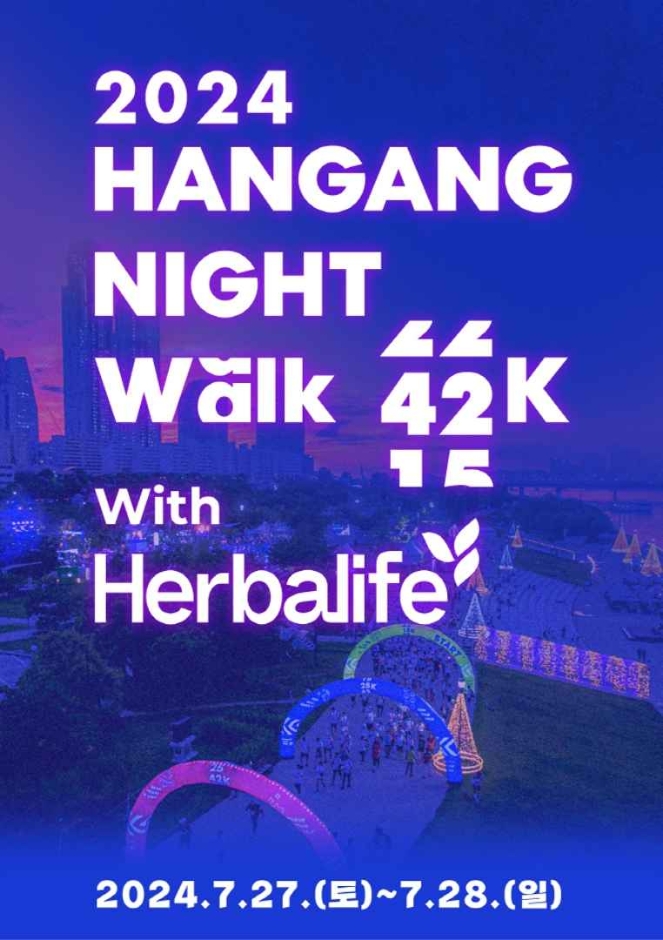

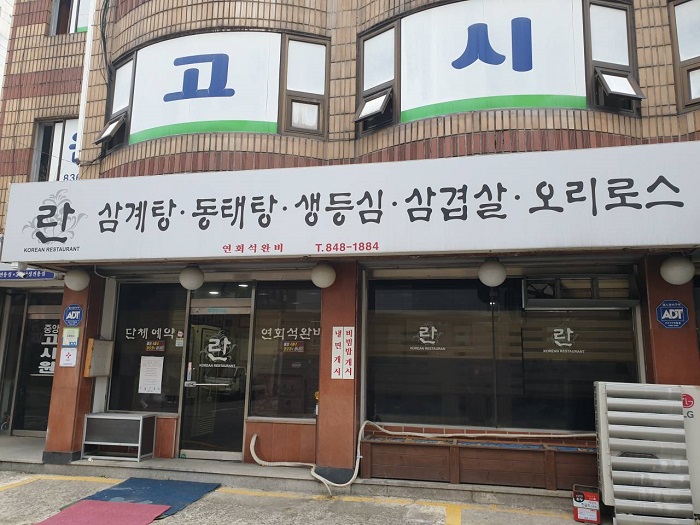
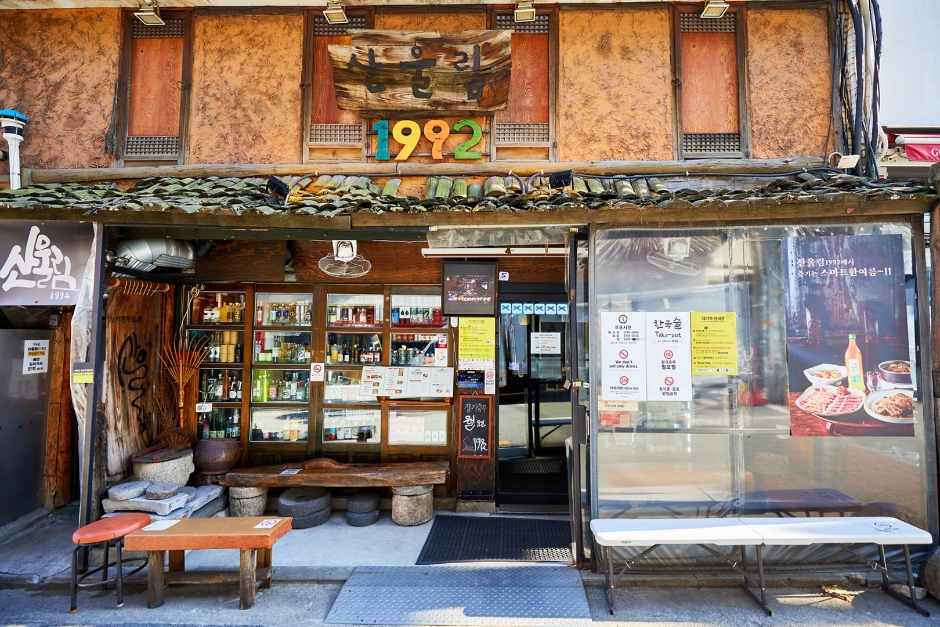

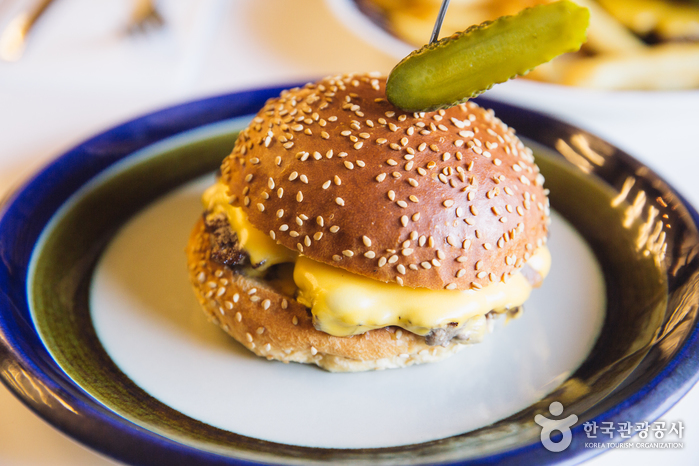
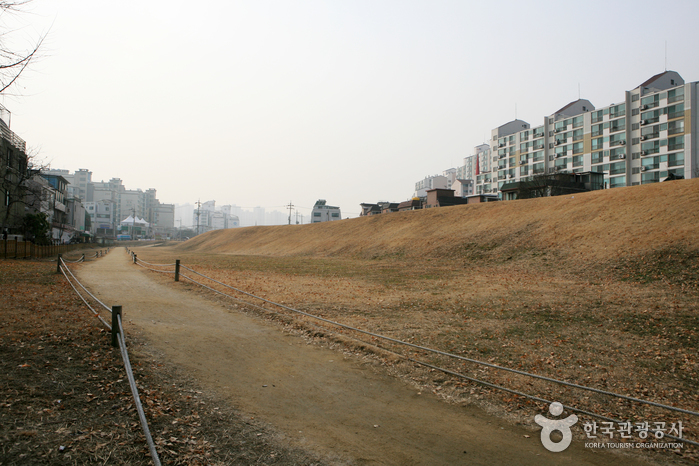
 English
English
 한국어
한국어 日本語
日本語 中文(简体)
中文(简体) Deutsch
Deutsch Français
Français Español
Español Русский
Русский